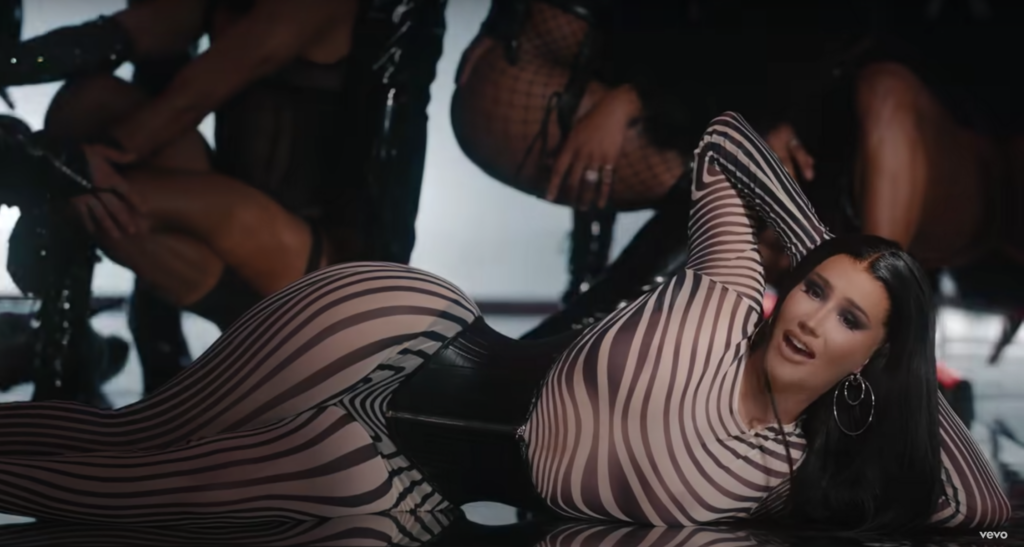When non-Black artists manipulate Black aesthetics, Blackness becomes a choice, where one picks and chooses the parts they want and leaves behind what’s unappealing. This is obviously not the case for Black people.

Jesy Nelson, former member of British music group Little Mix, was criticized last year for “Blackfishing” in her music video for her debut solo single, “Boyz.” Critics accused Nelson of exploitation of Black cultural aesthetics, such as darkened skin, curly hair and clothing style. This misuse of Black aesthetics once again sparked conversations about numerous non-Black artists’ tendencies to utilize Black aesthetics for personal profit.
Blackfishing refers to a non-Black person’s manipulating of Black aesthetics for the purpose of attaining social capital or monetary benefit. Blackfishing can manifest in various forms, such as a non-Black person’s attempted use of African American Vernacular English (AAVE), the use of cosmetic plastic surgery or photoshop to attain “Black” physical features, or the appropriation of Black cultural attire, such as box braids or durags. Such critique is most commonly directed towards non-Black music artists such as Nelson or Iggy Azalea, who was most recently condemned for Blackfishing in her music video for “I Am The Strip Club.”
The problem with Blackfishing lies in the reasons for which artists like Nelson and Azalea employ Black aesthetics in their music videos. What kind of representations are these artists attempting to convey through the manipulation of such aesthetics?
In music videos by non-Black artists that employ Black aesthetics, they are typically only used when signalling one or more of the following sentiments: sexual desire, “criminal” or “bad” behavior, or a sort of bold “sassiness” or assertiveness. For example, Azalea’s “I Am The Strip Club” music video features her in long dark hair and unusually dark skin as she raps:
Don’t need dark rooms (I am the strip club)
Don’t need red lights (I am the strip club)
I do the lap dance (I ride the pole up)
I am the, the strip club
When comparing this performance to other music videos in which Azalea is not explicitly attempting to communicate sex appeal, the difference is stark. She, like other non-Black artists, strategically uses Black visual and lingual aesthetics only when she wants to convey sex appeal or other related sentiments that are linked to Black stereotypes. This choice is a problem because it limits the parameters of what Blackness means and perpetuates restrictive stereotypes of Black women as hypersexual and aggressive. In cases like this where artists manipulate Black aesthetics to communicate a limited list of sentiments, Blackness becomes a choice, where one can pick and choose the parts of Blackness that they want and leave behind the unappealing parts—and this is obviously not the case for Black people.
Additionally, artists frequently Blackfish when they want to perform a sort of self-reinvention or reimagination of their performance identity. This is frequently a characteristic of artists who leave their “well-behaving” and “modest” pasts behind in favor of profitable self-redefinitions as “bold,” “misbehaving” and “sexually liberated.” In such situations, artists co-opt preexisting Black aesthetics to create a profitable identity that reinforces Black stereotypes. Such stylistic choices also attempt to present the performance as a manifestation of the artist’s inventiveness, erasing the Black people who collectively create such styles and celebrate their multitude and complexity in their own communities.
Blackfishing also perpetuates racialized standards of desire. When non-Black artists Blackfish, they specifically attempt to portray mixed or racially ambiguous Blackness, assuming a light brown skin tone, loose curls or straight hair, a thin nose and so on. These artists never visually perform Blackness to its fullest “extent”—evident in their avoidance of very dark skin or kinky hair.
These choices are products of a centuries-long racialized matrix of desire; total Blackness is considered undesirable, but hypersexual; and total whiteness is considered desirable, but too respectable to be displayed as sexually available. This is why racial mixture is so commonly portrayed as the epitome of desire: It combines the desirability of whiteness and the apparent sexual availability of Blackness to create the ideal erotic figure. Thus, when artists attempt to perform a sort of racial mixture in their music videos, they perpetuate racist standards of desire that are fundamentally anti-Black.
So, yes, acts of Blackfishing are inherently anti-Black. They are not displays of appreciation for Black aesthetics or supposed manifestations of “Gen Z culture.” Blackfishing affirms Black stereotypes, alienates Black people from their own culture and maintains racialized standards of desire.
This article was originally published by The Sophian, Smith Colleges’s independent, student-run newspaper. It has been republished with permission.
Up next:





